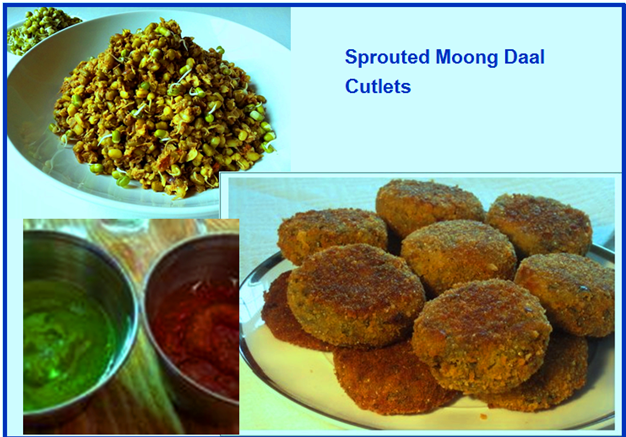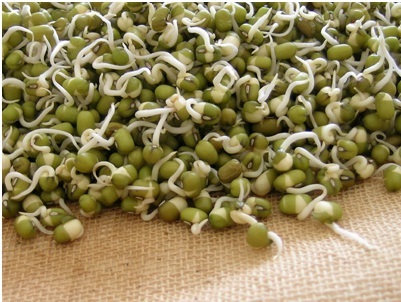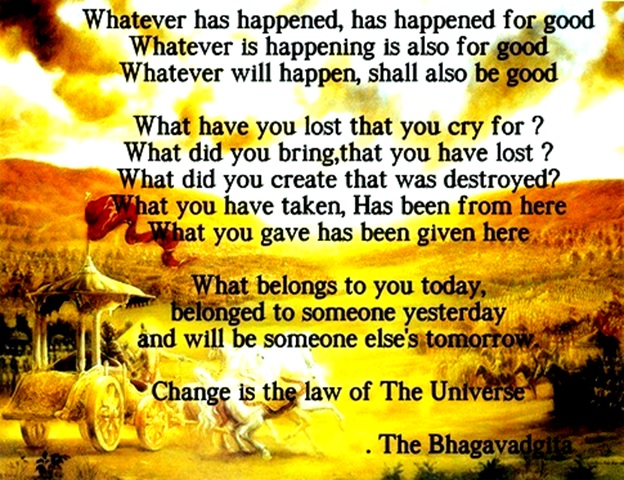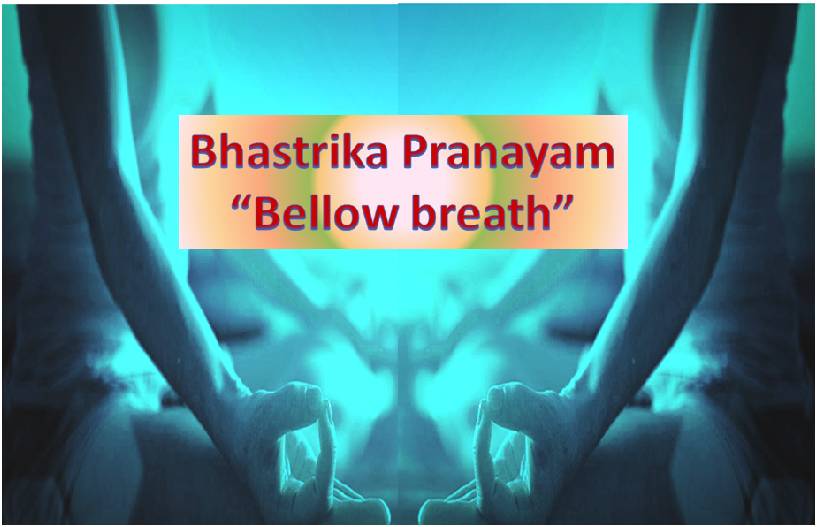“The BhagavadGeetha has the depth of the ocean and the vastness of the sky.”
“Don’t think The BhagavadGeetha got over long time ago. It is still going on everyday in each and every person’s life. Our life is all these 18 chapters of the Geetha. In your life, you can see which chapter you are in now. Where are you stuck? 1st Chapter? 2nd? 3rd? … You can gauge for yourself where your life is.” Sri Sri Ravi Shankar
BhagavadGeetha has 18 chapters and the meaning of these 18 chapters are explained by Sri Sri Ravishankar Guruji in simple words. In a meeting someone asked Guruji “thousands of years ago people had the same problems as we all have today, there is not much difference. Things have not changed much in human life. How we compare then present day life to 1000 years back? “
Sri Sri Ravi Shankar clarified the doubts in simple words while explained the concept of 18 chapters of BhagavadGeetha.
Thousands of years ago also, there was a new moon and there was a full moon, there was winter and there was spring. Therefore, in everyone’s life also, the 18 chapters of the BhagavadGeetha happen.
• The first chapter is where you regret and say, “I am powerless and I give up”.
• The second chapter in your life is when someone wakes you up and says, “Hey come on! There is nothing to regret in life. There is something in you that don’t change and you have the power to sail over all this”. Then you wake up and you felt good.
• The third chapter tells you to act. Do not sit and worry, ‘What about me? What about me? ‘Go and act, this is Karma Yoga.
• The fourth chapter tells you, now that you are acting you must also listen to knowledge. Don’t become like a machine and only act, listen to knowledge as well. There is something beyond all this.
• The fifth chapter tells you about material and spiritual knowledge. You cannot say, “Everything is being done and there is nothing for me to do”, or you cannot think, “I am doing everything. I did this and I did that”. This is not going to work for you. Wake up and see, are things happening or are you really doing it?
• Then the sixth chapter is when you learn to meditate.
• The seventh chapter tells you, now that you are meditating, you should know the author of meditation – the one who is meditating in you. ‘Who am I? What is time?’ Knowing all about is science. When we are deeply connected with ourselves, anything that we do in the world seems so effortless.
• It continues like this- When you meditate miracles happen in your life. Wake up and see the miracles! Many do not observe miracles, nor believe in it. If you recognize it and believe in it then it happens even more! Give a chance for miracles to happen, don’t be so steeped in the material cause and effect — ‘I did this so this will happen’, or ‘I did that and only that will happen’, no! You did it but something else can also happen unexpectedly! Recognizing that ‘something different’ is Vibhuti. Vibhuti means giving a chance for miracles in your life, exploring it.
•Then after that is knowing the universal self and knowing that everything is in me and I am in everything.
• Then there is love and devotion. You know and understand all this, but then what? It is not enough. You should be in deep love! When you know that the divine loves you, you cannot but fall in love with the divine! That is the 12th chapter.
• Then you understand what are the divine qualities and what are the demonic qualities and you realize that you have all the divine qualities in you.
• Then there are the three qualities or Gunas (Satvic, Rajasic and Tamasic) to everything: mind, ego and food. Sattavic ego is, “I am everything and everybody”. The Tamasic ego is knowing that you are only this body, and the Rajasic ego is having a limited mindset and falling into craving and aversion.
• The final chapter is about knowing that you cannot wash your own sins. Drop them and understand what is being said, “I am here to take care of your sins. Feel that you are mine, be connected to me and I will take care of everything. Just relax!’ This is Sanyaasa or liberation.
These are the 18 chapters and these chapters are all a part of everybody’s life. Sometimes we do not reach up to the 18th chapter. It takes many lifetimes to reach there!
Courtesy: http://www.artofliving.org/global/bhagavad-gita





